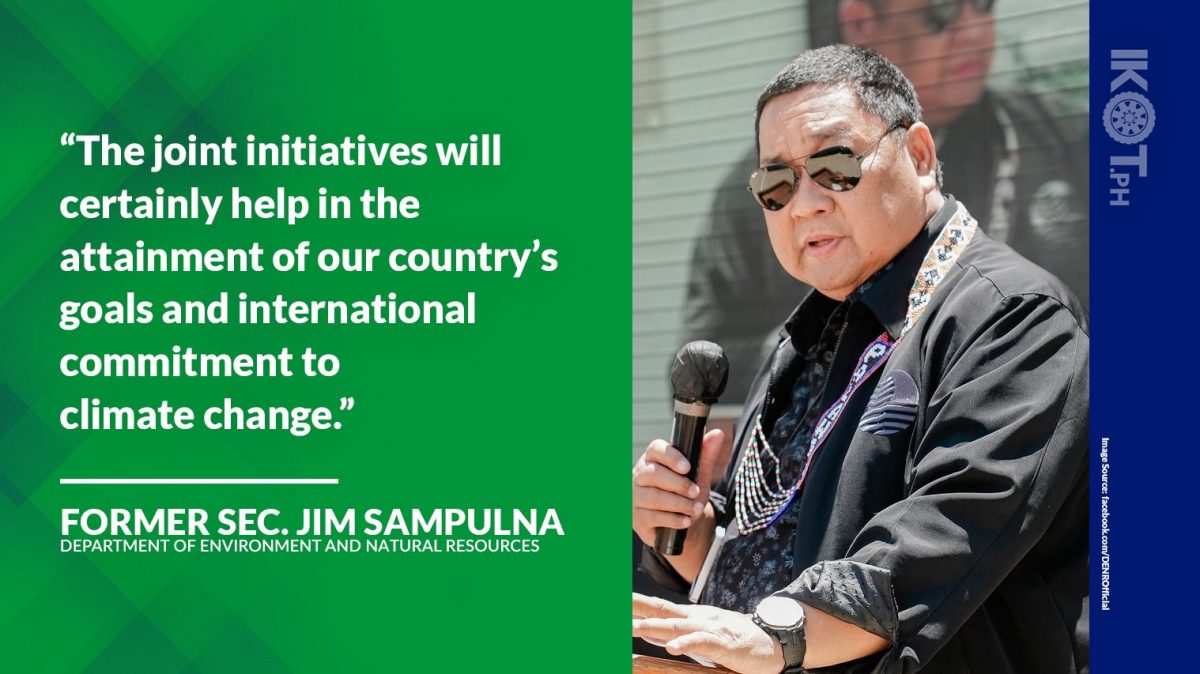The Philippines, through the Department of Environment and Natural Resources (DENR), has signed partnerships with the Republic of Korea and Germany to pursue development projects on marine litter management and peatlands conservation, respectively.
The Enhancement of Marine Litter Management in Manila Bay (EMLM) Project and the Ensuring Sustainable Benefits from Peatlands through Protection and Wise Use (ESBenePeat) Project were formally launched recently following the presentation of EMLM’s pre-signed Record of Discussions (ROD) and Grant Agreement (GA) for ESBenePeat.
“Please be assured that the DENR will value and remain committed to the agreement that it has earlier entered into with your respective organizations during my incumbency,” former DENR Acting Secretary Jim Sampulna said.
“These joint initiatives will certainly help in the attainment of our country’s goals and international commitment to climate change,” Sampulna added.
The ROD and the GA serve as the legal implementation instrument of EMLM and ESBenePEat, respectively.
The Republic of Korea will be providing a $7.7-million grant for the implementation of marine litter management within the Manila Bay area.
It will be implemented by the DENR and Korea International Cooperation Agency (KOICA), in partnership with the Philippine Coast Guard.
“The Philippines accounts for about 800,000 metric tons of plastic marine pollution annually.”
KOICA Assistant Country Director Choi Misun said that the EMLM “marks the start of the Korean and Philippine governments’ partnership in the prevention, reduction and management of marine litter,” citing international studies that the Philippines accounts for about 800,000 metric tons of plastic marine pollution annually.
Misun said that the project will help prevent plastic waste from coastal areas near Manila Bay from escaping into the ocean.
EMLM is a multi-year assistance to be implemented until 2025 to establish a marine litter monitoring system and strengthen the government’s capacity to address marine litter management, augmented with the construction of a $5.7-million marine clean up vessel to be sourced from the grant.
The event also green-lighted the ESBenePeat’s implementation with a €713,537.23-grant from the European Union and the Federal Republic of Germany through the German International Agency for Cooperation (GIZ).
ESBenePeat, which will be piloted in the 5,487-hectare Caimpugan Peat Swamp Forest (CPSF) in Agusan Marsh Wildlife Sanctuary in the province of Agusan del Sur and Sab-a Basin in the province of Leyte, seeks to mitigate greenhouse gas emission by reforesting, re-wetting, and rehabilitating degraded areas; and identifying and enhancing biodiversity-friendly livelihood practices for the communities, while ensuring the protection of peatlands within the two areas.
“The country’s peatlands have remarkably higher carbon sequestration potential than any other studied forest types in the country.”
DENR-Biodiversity Management Bureau (BMB) Director Natividad Bernardino explained that the country’s peatlands, estimated to cover some 20,000 hectares, are “remarkably higher carbon sequestration potential than any other studied forest types in the country” as carbon sinks “when left undisturbed.”
Bernardino pointed out that CPSF alone stores about 22.9 million tons of carbon.
“However, the Philippine peatlands are among the least known and understood ecosystems found in the country,” she lamented.
Also marking the event was a partnership launch between the DENR and the Department of Agriculture (DA) for the “Integrated Approach in Management of Major Biodiversity Corridors in the Philippines” which is now in its first year of implementation until 2027.
The project covers the Mindoro Biodiversity Corridor in Region 4B and the Eastern Mindanao Biodiversity Corridor in Regions 11 and 13, with a total area of 2.3 million hectares.
The DENR-DA partnership is in line with the project’s aim to solve the increased degradation of habitats from deforestation, conversion to agriculture, and expanding infrastructure development, pollution, invasive alien species, and climate change in the two areas.
The project, with a financial grant of US$12.2-million from the Global Environmental Facility (GEF) through the United Nations Development Programme (UNDP), seeks to enhance local biodiversity-friendly livelihoods and make the impact of the project be felt by communities and resource managers living within and around the biodiversity corridors.
This will be implemented through an integrated and comprehensive planning framework designed to mainstream land and natural resources management and biodiversity conservation objectives in the two key biodiversity corridors.


